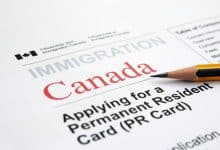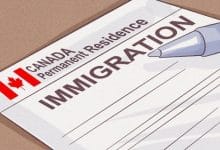Canadian Experience Class
How To Apply For The CEC
Do you have job experience in Canada or a desire to live and work in Canada for a period of time to get international experience? Maybe you’ve been thinking about studying in Canada and want to know what your possibilities are for permanent residency once you’ve finished. The Canadian Experience Class, or CEC, might be the key!
Let’s examine how to apply for the Canadian Experience Class (CEC) and why it’s so underappreciated.
Canadian Experience Class
The Canadian Experience Class is one of three federal economic immigration programs governed by the Express Entry system. It permits skilled employees who have spent at least one year working in Canada in the previous three years to apply for permanent residency.

How to Use the CEC to Apply for Permanent Residency
The following are major steps for applying for permanent residency through the CEC route:
| Check Eligibility |
| Prepare Your Documents |
| Submit Your Profile |
Step 1. Check Your Eligibility
There are four basic eligibility criteria for the CEC:
- Meet the required language levels for each language ability for your vocation.
- Before applying, you must have at least one year of competent job experience in Canada within the past three years.
- have gained your work experience by working in Canada while under temporary resident status with authorization to work
- To be eligible for entry into Canada
How is work experience calculated?
If you have paid skilled job experience, such as salaries or earned commission, your work experience might help you improve your Comprehensive Ranking System (CRS) score. Before being included into the Express Entry draw pool with other applications, all CEC applicants must create an Express Entry Profile, which will be graded and given a CRS score. Volunteering or unpaid internships, unfortunately, do not count. Any hours worked in excess of 30 per week will not be taken into account.
What really is skilled work experience?
According to the National Occupational Classification or NOC code, Immigration, Refugees and Citizenship Canada (IRCC) defines skilled job experience as follows:
- Managerial positions (skill level 0)
- Professional positions are available (skill type A)
- Technical and skilled trades jobs (skill type B)
- At any skill level, your work experience in Canada might be one or a combination of several types of jobs.
Step 2. Prepare Your Documents
You’ll need different documents to complete different phases of any Express Entry program, so it’s better to get everything ready ahead of time.
Creating your Express Entry Profile
To help you complete your Express Entry Profile correctly, you’ll need the following documents.
- A passport or travel document
- Language test results in either English or French or both
- Proof of Canadian education or an educational credential assessment (ECA) report for immigration purposes if you want to get points for the education you got outside Canada
- Provincial Nomination or PN (if you have one)
- A written Canadian job offer (if you have one),
- Proof of your Canadian work experience and experience outside of Canada (if you have any),
- Your certificate of qualification in a trade occupation issued by a Canadian province or territory (if you have one)
Applying for permanent residence
If your application is accepted and you are asked to apply for permanent residency, you must upload copies of the following documents:
- Medical exams
- Police certificate
- Representative form (if you’re using an RCIC or immigration lawyer)
- Common-law union form/marriage/divorced/death certificate (if applicable)
- Birth/adopted certificate (if travelling with a dependent child/children)
Step 3: Submit Your Profile
It’s time to submit your Express Entry profile now that you’ve completed your applications and gathered all of your supporting documents. The Comprehensive Ranking System (CRS) will provide a score to your profile based on numerous characteristics, and it will be placed in a pool with other qualified candidates. You’ll receive an Invitation to Apply (ITA) for permanent residency if you’re one of the best applicants.
You will have 60 days to accept or reject the invitation. Don’t be concerned if you don’t receive an ITA. Your profile will be kept in the draw pool for at least one year or until an ITA is received.
FAQs: Canadian Experience Class
1. Are self-employment and student job experience eligible for the Canadian Experience Class?
Apparently, job experience obtained while self-employed or as a full-time student does not count toward the CEC.
2. Does part-time work or experienced earned on a Post-Graduation Work Permit count toward the CEC?
“PGWP experience is transferable to CEC.” Part-time employment may be acceptable, but it will be assessed based on the percentage of hours worked.
3. How long does it take to complete a CEC application?
Because the Canadian Experience Class is controlled via the Express Entry system, 80 percent of applications might be processed in as little as six to eight months, depending on the program you apply through. CEC offers the quickest processing times at the moment.
4. What is the minimum number of points required for the Canadian Experience Class?
The cut off score is determined by taking an average of the scores of other candidates in your draw pool. The cutoff score fluctuates when new candidates enter the draw pool.
5. Is WES required by the CEC?
No, both the CEC and the FSWP are free from this requirement; however, FSTP candidates will need the WES in order to get permanent residence in Canada through Express Entry. WES is a recognized provider of ECAs for Canadian immigration, and only the applicant’s top credentials must be evaluated. Learn how to send transcript to WES for verification.
6. How many pay stubs am I required to submit for CEC?
Paystubs aren’t required, but they can be used as proof of work to boost your CRS score. They can be useful if you are paid on an hourly basis rather than a salary, or if your hours change owing to part-time employment. You may want to explore jobs in Canada.
In order not to miss out on prompt updates from careerinfos.com, enter your email address below and hit the subscribe button beneath.
A confirmation link will be sent to your inbox or check your spam mails if its not in your inbox. Make sure you click the link to confirm your subscription in order not to miss any updates from this blog. All comments (related to the post above) should be dropped via the comment section below.









Wow… This is mind blowing.
I never knew this option exist.
With this option, moving to Canada should be easy.